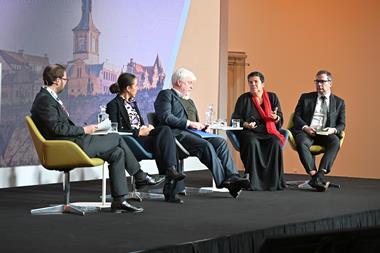Pension funds and insurers are set to take on a much greater volume of assets such as infrastructure, real estate loans and private debt placements in future as bank balance sheets shrink still further, a seminar at the IPE Awards in Noordwijk heard on Thursday.
Hans Stoter, CIO at ING Investment Management, told the seminar on investment strategy and outlook: “We see a trend for smaller balance sheets on banks, and there is a lot more to come.”
On an absolute basis, there are still a lot more assets to come onto the market, and they will have to be absorbed by insurance companies and pension funds, he said.
This trend, combined with the need from pension fund investors for income and low-volatility assets, will lead to pension funds taking on assets such such as infrastructure, real estate loans and private placements of debt, Stoter said.
“For many pension funds, these private assets fit the bill perfectly,” he said.
Rather than a new trend, however, Stoter said he saw this as a move back to the old days, since many of these pension funds had been investing in this type of asset to a greater extent before the introduction of the euro.
However, Stoter warned it was a buyer-beware market.
“It is very difficult to find a large insurance company these days that doesn’t have a couple of hundred million set aside for infrastructure, and the difficulty with most of these assets at the moment is in origination,” he said.
The origination of such assets is becoming more difficult than getting the exposure to them, he said.
“The trend is there, but the question is, will it be done at the right spread?” Stoter said.
Panellists told the seminar the outlook for global economic growth was closely linked to interest rate prospects – both of which are far from clear.
Jeremy Lawson, senior international economist at Standard Life Investments, said the pace at which bond yields increase from here is a critical question for the future of the economy.
“The Fed’s reaction function is still somewhat unclear, and […] the US economy is only able to absorb a gradual rate of increase in interest rates,” he said. “There is still a lot of despondency about the global economic outlook.”
Peter Hensman, global strategist at Newton Investment Management, warned there was still an “extraordinary stock” of debt outstanding, with US household debt standing at 155% of GDP compared with 180% in 2010.
“The reason we’re not feeling the pain of this debt is just low interest rates,” he said. “That’s one reason to be more cautious.”












No comments yet